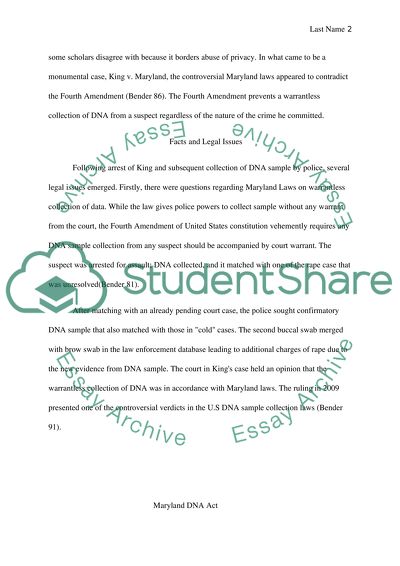Cite this document
(“Maryland v. King: Can DNA collected without a warrant be admitted as Essay”, n.d.)
Retrieved from https://studentshare.org/law/1666257-maryland-v-king-can-dna-collected-without-a-warrant-be-admitted-as-evidence-under-the-fourth-amendment
Retrieved from https://studentshare.org/law/1666257-maryland-v-king-can-dna-collected-without-a-warrant-be-admitted-as-evidence-under-the-fourth-amendment
(Maryland V. King: Can DNA Collected Without a Warrant Be Admitted As Essay)
https://studentshare.org/law/1666257-maryland-v-king-can-dna-collected-without-a-warrant-be-admitted-as-evidence-under-the-fourth-amendment.
https://studentshare.org/law/1666257-maryland-v-king-can-dna-collected-without-a-warrant-be-admitted-as-evidence-under-the-fourth-amendment.
“Maryland V. King: Can DNA Collected Without a Warrant Be Admitted As Essay”, n.d. https://studentshare.org/law/1666257-maryland-v-king-can-dna-collected-without-a-warrant-be-admitted-as-evidence-under-the-fourth-amendment.


